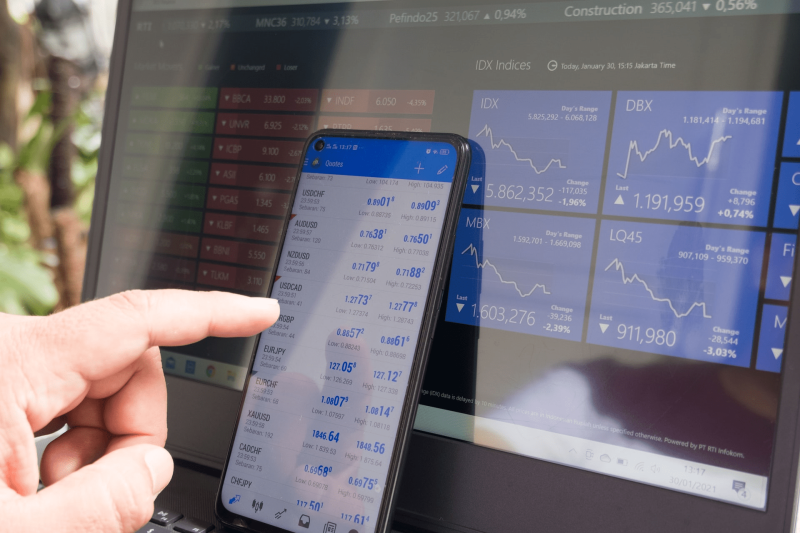A Forex compounding calculator is a tool that can help traders calculate the potential profits or returns on a trading account that is being compounded over time. The calculator typically considers the starting balance, the monthly return, the number of months, and the compounding frequency.
It can provide valuable information on the effects of compounding on account growth and help traders make more informed decisions about their trading strategy.
Also Read: Forex Risk Management- How to calculate the correct lot size in forex?
Contents
- What Is Forex Compounding Calculator?
- How To Use the Forex Compound Calculator
- How Is the Compound Interest Formula Calculated?
- How To Calculate Forex Gains and Losses
- Pros And Cons of Forex Compounding Gains Calculator
- Bottom Line
What Is Forex Compounding Calculator?
One of the most common tools employed by Forex traders is the Forex Compounding Calculator, which simulates the development of one’s trading account by compounding gains with a predetermined gain percentage per trade over a predetermined period.

By using this tool, traders can show how effective compounding gains can be, even with low-profit percentages or moderate gain margins of 1% per transaction. After just 70 profitable trades, the initial account equity would quadruple!
How To Use the Forex Compound Calculator
This Forex Compound Calculator profits can be used to calculate the precise amount that can be added to the original starting balance total gain over several periods with a moderate gain percentage. Let’s go through each field in our calculator’s interface.
Starting Balance
The initial investment value, also known as the opening balance of an account, is shown in this area. This example will start with a value of 1,000 units in any base currency for the account.
Number of Periods
This parameter indicates how many intervals traders can replicate a successful strike of any successive winning transactions.
For our example, we’ll suppose that we’ll have 30 straight profitable trades over the course of a year.
Gain percentage per period
The compounding gains calculator’s most important parameter! To suit your trading approach, you can replicate the gain percentage at any time using the data in this area.
How Is the Compound Interest Formula Calculated?
The compounding interest formula is: FV = P(1 + r/n)^(nt)
Where:
- FV = Future Value of your investment
- P = Principal or Initial deposit
- r = Interest Rate
- n = the number of times the investment is compounded in a period
- t = the number of periods.

This formula calculates the future value of an investment, given the initial deposit (P), the interest rate (r), the number of times the interest is compounded per period (n), and the number of periods (t) over which the investment is made.
Also Read: The Gann Square of 9: Calculating Market Values for Over a Century
How To Calculate Forex Gains and Losses
To calculate Forex gains and losses, you will need to determine the following:
- Position size: This is the number of units of the currency pair that you have bought or sold.
- Starting Balance: This is the price at which you entered the trade.
- Exit price: This is the price at which you closed the trade.
Once you get the above information, you can calculate your gain or loss as follows:
- For a long position (meaning you bought the currency pair), subtract the entry price from the exit price and multiply the result by the position size.
- For a short position (meaning you sold the currency pair), subtract the exit price from the entry price and multiply the result by the position size.
- The result will be your gain or loss in the currency of the ending account balance.
It’s important to note that when calculating gains and losses, forex traders must consider the currency their savings account is based on and if the trade was made by buying or selling the currency pair.

Additionally, it would help if you always kept in mind that these calculations are based on the assumption that all other factors remain constant and do not take into account market volatility or other external factors that may affect your foreign exchange trading performance.
Pros And Cons of Forex Compounding Gains Calculator
Pros:
- Provides an estimate of potential account growth
- Helps traders make more informed decisions
- Easy to use
Cons:
- Based on assumptions
- Not a guarantee of future performance
Limited scope
Bottom Line
A Forex compounding calculator can be a useful tool for traders to estimate the potential growth of their trading account over a certain period. It estimates total return or profit based on assumptions about starting balance, monthly return, number of months, and compounding interest formula.
However, it should be used as a guide, not as a guarantee of future performance, as it doesn’t consider market volatility or external factors that may affect trading performance.



